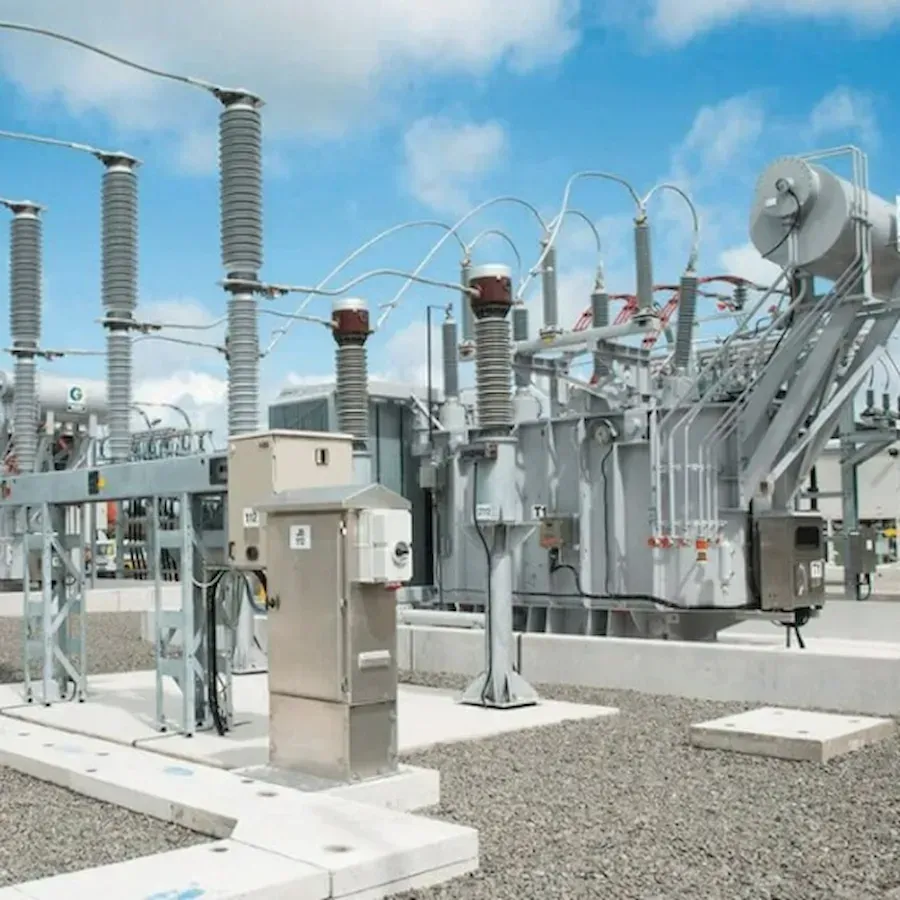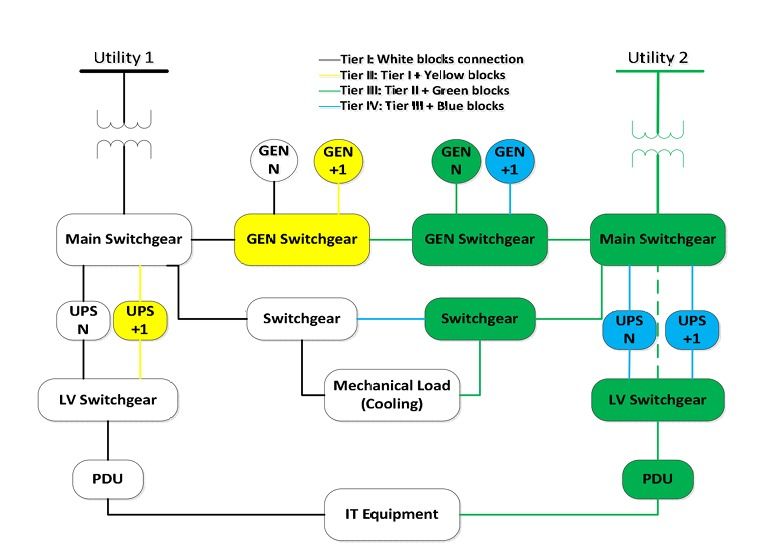A Coordinated Electric System Interconnection Review—the utility’s deep-dive on technical and cost impacts of your project.
Challenge: Frequent false tripping using conventional electromechanical relays
Solution: SEL-487E integration with multi-terminal differential protection and dynamic inrush restraint
Result: 90% reduction in false trips, saving over $250,000 in downtime
Model Accuracy and Verification for EMT and PSPD Simulations of Inverter-Based Resources
May 30, 2025 | Blog

Introduction
With the rapid integration of inverter-based resources (IBRs) such as solar PV, wind, and battery energy storage systems (BESS) into the grid, the importance of model accuracy and validation has escalated. Grid planners, operators, and regulators now require that both Electromagnetic Transient (EMT) and Positive Sequence Phasor Domain (PSPD) models reflect actual equipment behavior. This accuracy is vital for ensuring system stability, reliability, and compliance with interconnection requirements.
This article explores the critical components of model accuracy and verification, focusing on obtaining and validating models from OEMs, benchmarking EMT models against field data, and verifying consistency between model parameters and as-built settings.
1. Importance of EMT and PSPD Models
Electromagnetic Transient (EMT) Models
EMT models simulate fast transient phenomena (microseconds to milliseconds), such as switching surges, fault-induced delayed voltage recovery, and control interactions. They are essential for studying:
- Sub-synchronous oscillations (SSOs)
- Harmonics
- Fast control loops in inverter-based systems
Positive Sequence Phasor Domain (PSPD) Models
PSPD models are used for longer time-scale dynamic simulations (seconds to minutes) such as:
- Frequency response
- Voltage ride-through
- System-level stability and load-flow studies
Both model types are required to fulfill regulatory and ISO/RTO interconnection mandates such as those from NERC, WECC, CAISO, ERCOT, and PJM.
2. Obtaining Model Validation Reports from OEMs
OEM Responsibilities
Original Equipment Manufacturers (OEMs) of inverters and plant controllers must provide:
- EMT and PSPD model files in compatible formats (e.g., PSCAD, PSS/E)
- Documentation of assumptions, control logic, and boundaries
- Validation reports comparing simulation results with factory or field test data
What to Request
When dealing with OEMs, request the following:
- Latest version of EMT and PSPD models
- Model user guides and version history
- EMT validation reports based on hardware-in-the-loop (HIL) or power-hardware-in-the-loop (PHIL) testing
PSPD validation reports using site commissioning or grid event data
3. Benchmarking EMT Models Against Real Performance
Field Data Collection
Collect operational data during:
- Plant commissioning
- Grid disturbances (e.g., faults, frequency deviations)
- Routine SCADA and PMU measurements
Benchmarking Steps
- Scenario Matching: Recreate operating conditions in the EMT model.
- Simulation Execution: Run transient simulations for matching events.
- Result Comparison: Compare real vs. simulated waveforms (voltage, current, active/reactive power).
- Error Analysis: Quantify discrepancies using metrics such as RMSE or time delay.
- Root-Cause Investigation: Identify causes of mismatch (e.g., outdated firmware, controller deadbands not modeled, parameter mismatches).
4. Verifying Model Parameters Against As-Built Equipment
Why It Matters
Models are only accurate if the parameters match actual site conditions. Deviations between configured controller values and model inputs lead to unreliable simulation results.
Verification Process
- Review inverter protection and control settings (ride-through limits, power factor settings, droop settings).
- Compare OEM-provided model parameters with commissioning documentation and SCADA snapshots.
- Validate transformer and plant-level settings (tap positions, impedance, filter bank ratings).
- Maintain a “Model Verification Matrix” tracking model vs. as-built discrepancies and resolutions.
Conclusion
Accurate modeling is foundational to secure integration of inverter-based resources. By working closely with OEMs, benchmarking model behavior with real-world data, and ensuring alignment with as-built settings, utilities and developers can build confidence in simulation results. Regulatory compliance and system resilience both depend on diligent model verification processes.
20 Technical FAQs on EMT and PSPD Model Accuracy & Verification
1. What are EMT and PSPD models used for in grid integration?
EMT models analyze fast transients, while PSPD models handle system-wide stability and load flow over longer durations.
2. Why is model validation critical?
Validation ensures that simulations reflect actual system behavior, which is essential for grid reliability and regulatory compliance.
3. How often should EMT and PSPD models be updated?
Typically during major equipment upgrades, firmware changes, or interconnection re-studies.
4. Who provides model validation reports?
OEMs are responsible for supplying validated EMT and PSPD models, along with benchmarking reports.
5. What is benchmarking in EMT modeling?
It is the process of comparing simulation results to actual performance data to verify accuracy.
6. What tools are commonly used for EMT simulation?
PSCAD, EMTP-RV, RTDS, and ATP are commonly used tools.
7. What formats are used for PSPD models?
PSS/E (.dyr), PSLF (.dyd), and DigSILENT PowerFactory are typical formats.
8. Can field data replace validation reports?
Field data enhances validation but cannot replace structured OEM validation.
9. What is model-to-field discrepancy analysis?
A comparison process that highlights differences between model output and field measurements.
10. How are discrepancies quantified?
Using RMSE, correlation coefficients, and waveform overlays.
11. What causes simulation inaccuracies?
Outdated firmware, incorrect parameterization, or missing control logic are common causes.
12. What’s the role of PMU data in verification?
PMU data provides high-resolution synchronized measurements for benchmarking.
13. Are black-box models acceptable?
Only if accompanied by validation data and performance documentation.
14. How do you handle missing parameters from OEMs?
Submit a formal RFI (Request for Information) and escalate through compliance/legal channels.
15. What should a model verification matrix include?
Parameter name, as-built value, modeled value, delta, and resolution status.
16. Is HIL testing mandatory for validation?
Not always, but it is highly recommended for EMT validation of fast control dynamics.
17. Can third-party labs validate models?
Yes, independent labs can perform benchmarking and validation if OEM data is incomplete.
18. What is a tuning study?
An iterative process to adjust model parameters to better align with measured performance.
19. How does model validation support NERC compliance?
It helps meet standards like MOD-032 and PRC-024 that require accurate modeling.
20. What happens if models fail validation?
They must be corrected and re-submitted. ISO/RTOs may delay project approval until resolved.

About the Author:
Sonny Patel P.E. EC
IEEE Senior Member
In 1995, Sandip (Sonny) R. Patel earned his Electrical Engineering degree from the University of Illinois, specializing in Electrical Engineering . But degrees don’t build legacies—action does. For three decades, he’s been shaping the future of engineering, not just as a licensed Professional Engineer across multiple states (Florida, California, New York, West Virginia, and Minnesota), but as a doer. A builder. A leader. Not just an engineer. A Licensed Electrical Contractor in Florida with an Unlimited EC license. Not just an executive. The founder and CEO of KEENTEL LLC—where expertise meets execution. Three decades. Multiple states. Endless impact.
Services

Let's Discuss Your Project
Let's book a call to discuss your electrical engineering project that we can help you with.

About the Author:
Sonny Patel P.E. EC
IEEE Senior Member
In 1995, Sandip (Sonny) R. Patel earned his Electrical Engineering degree from the University of Illinois, specializing in Electrical Engineering . But degrees don’t build legacies—action does. For three decades, he’s been shaping the future of engineering, not just as a licensed Professional Engineer across multiple states (Florida, California, New York, West Virginia, and Minnesota), but as a doer. A builder. A leader. Not just an engineer. A Licensed Electrical Contractor in Florida with an Unlimited EC license. Not just an executive. The founder and CEO of KEENTEL LLC—where expertise meets execution. Three decades. Multiple states. Endless impact.
Leave a Comment
We will get back to you as soon as possible.
Please try again later.
Related Posts














